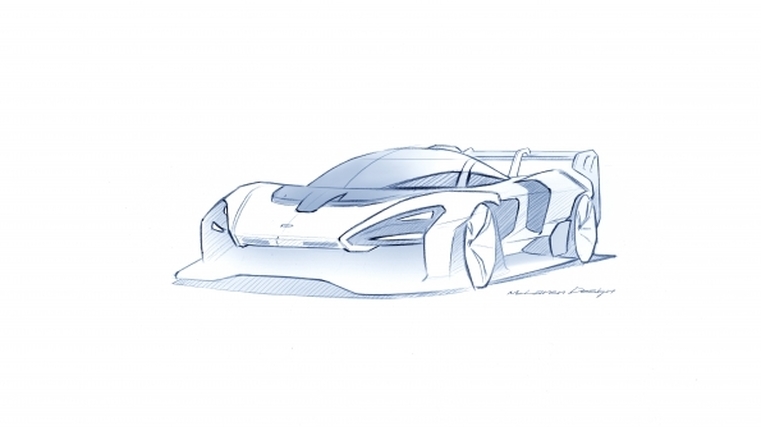Senna sketch showed off

The McLaren Senna GTR, a track-only hypercar that debuted in concept form at the Geneva Motor Show in March and sold out in the same month, has started dynamic testing with some specifications confirmed.
They include it will at least generate 1,000kg of downforce and have race-bred suspension developed from the system used in the company’ GT3 programme.
The GTR is a more extreme version of the road-legal McLaren Senna being built at the McLaren Production Centre in the UK.
McLaren tested demand for the track-only, left-hand-drive only car on its introduction at Geneva saying that up to 75 would be produced, all of which have been allocated. Deliveries are due to begin from September 2019 when production of the road-legal McLaren Senna is complete.
The development prototypes that began testing last month will initially use modified Senna road-car bodywork. The final GTR shape – only shown in simple form in a new sketch – will be based on a chassis with wider track front and rear and centre-lock wheels.
The carbon-fibre body has wider fenders, a larger front splitter and rear diffuser, and a repositioned active rear wing. The last two elements combine to improve aero-efficiency by “coupling” the wing to the airflow from the diffuser, enabling greater downforce at lower speeds. Optimised aerodynamics in yaw improves cornering stability, while a reduction in pitch sensitivity leads to more braking stability.
The lightweight, but strong, carbon-fibre monocage at the heart of each GTR epitomises McLaren’s approach to weight reduction, which is taken even further with the new model.
A pared-back interior sees all airbags removed, as well as the infotainment central screen and folding driver display found in the road car, while a race-style steering wheel with integrated gearshift controls replaces the road-legal component. Air-conditioning is an exception to the rule of minimalism. Rear-collision avoidance is also standard.





